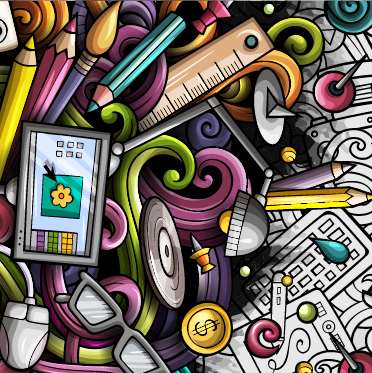Is it a coincidence that Autodesk is courting indie users with new licensing and Blender is getting more structured and looking more professional? We don’t think so.

Last summer, Autodesk reached out to indie content creators with a pilot licensing program for 3ds Max and Maya. The deal recognizes that many independent artists will find the price for Max and Maya to be a burden during seasons of uncertain workloads. The license is restricted to people who make less than $100,000 a year and is available to only one person per organization. So far, it’s limited to people working in Australia, Canada, New Zealand, the UK, or the US.
These are full licenses and the price is obviously attractive. Qualified users can license Max or Maya for one year for $250, but there is a catch. The subscription will auto-renew at the full price.
In a Facebook post, Chip Weatherman spelled out the auto-renew snare, and also underlined the simple solution of turning off auto-renew. Customers who still qualify for the discount can re-up for another year (if the program is still in place). Weatherman underlines the point that indie licensing is a pilot program. So yes, it could end at any time, but also snags can be found and ironed out including auto-renew. Weatherman says, “This is a pilot program to determine how & where we expand it. Much like when the telecom companies offer a new channel in select areas to see how to roll it out, this is similar.”
Obviously, Autodesk hopes indies will get so rich using Max and/or Maya that they’ll easily afford full licenses.
The signs look good for the program’s continuation. CEO Andrew Anagnost brought the licensing scheme up in his talk to the financial community for Autodesk’s 4Q earnings report. He mentioned that Indie licensing for Max and Maya is a great outreach opportunity for Autodesk saying, “there is a whole gamut of flexibility we’ve layered out there for people that really, really change the way people buy our software and who is buying it and who is paying for it.”
Still, there is outrage—much of it fueled by dislike of subscriptions and, that’s where Blender comes in.
Blender goes pro-ish
This article was inspired by Anagnost’s comment in the financial call and Blender’s announcement of a new plan for Blender LTS (long-term support) which came at around the same time. It seems likely that Autodesk’s indie pricing for Max and Maya has been motivated by the growing acceptance of Blender in professional settings or at least a recognition that there is a large population of 3D content creators who are living month-to-month as contractors and freelancers.
Blender has seen a strong upwelling of support and demand for their 2.8 release, which includes a lot of fixes and new features but the headline is that the hardworking Blender beavers have updated the workspace so that Blender’s interface is more consistent with other tools out there. With this version, one of the major challenges for learning Blender, figuring out where everything is and how to work it, has been eased.
In a blog post, Blender’s Francesco Siddi maps the increasing use of Blender by tracking site visits, download numbers, usage, and interactions on Steam. Siddi estimates the number of Blender users at 1–3 million. So, it’s unknown how many of those people are professionals or regular users or even adept, but it’s undeniable from Siddi’s tracking that the number of downloads and continuous users has zoomed up during 2019. In addition, contributions to the Blender’s voluntary development fund has grown in 2019. The Blender Development Fund now supports development with $105,000 in monthly contributions. Siddi says there are over 3200 members participating in the development fund with most of the money comes from corporate sponsors.
Going forward, the Blender org is proposing an LTS (long-term support) model in response to requests from large companies and studios who need to have control over the versions being used. The idea is that Blender will introduce one LTS release every year, and for a two-year period thereafter, it will be supported with bug fixes and updates for new hardware. The program is designed to ensure that a project started with an LTS version can be completed with the same version.
In the developer blog post, Blender Chairman Ton Roosendaal says:
A surprising amount of requests for LTS agreements came from corporations who have more strict installation procedures internally—for various reasons they do not want individual employees to download our releases. An official LTS with controlled install would fit their procedures much better. We will further investigate this topic in the coming period.
In the meantime, Roosendaal says 2.9 will be out in the summer of 2020 with new particle nodes and 3.0 will come along in Summer 2021 by then, a new numbering system will be in place. With 3.0, they’re planning to go to 3.1, 3.2, etc., for two years until the next major LTS release, 4.0, comes along in 2023.
As we’ve been writing, Blender has been steadily growing for a number of reasons. It’s been able to hit a cadence of new releases, and the organization is operating with increasing professionalism. It also doesn’t hurt that subscription models are becoming ubiquitous for professional software tools. Blender is free and licenses are perpetual.
Blender still has a community of dedicated volunteers to work on Blender as a labor of love, but it also has a professional staff.
Blender’s move to LTS seems to mirror Autodesk’s experimentation with different licensing options. Studios are demanding that Blender provide the kind of stability and version control associated with vendors like Autodesk, Foundry, SideFX, et al., and Autodesk wants to bring more independent users into its programs.
What do we think?
Content creators are a coveted user base. That’s evident from the attention being paid to them by hardware manufacturers. PC makers have lavished the kind of attention that used to be reserved for gamers on creatives with systems customized for creative workflows. The work artists do bring attention to their tools as well as to their skills. Unfortunately, creating beautiful things isn’t necessarily a path to wealth. The majority of people doing creative work are independents doing freelance work or working as contractors.
Autodesk and Blender are taking different paths to reach their customers, but both companies recognize the value of the independent. They’re not alone. We see creative people become as important to vendors as gamers and enginers and at least they’re being rewarded with better tools that are becoming more accessible.






